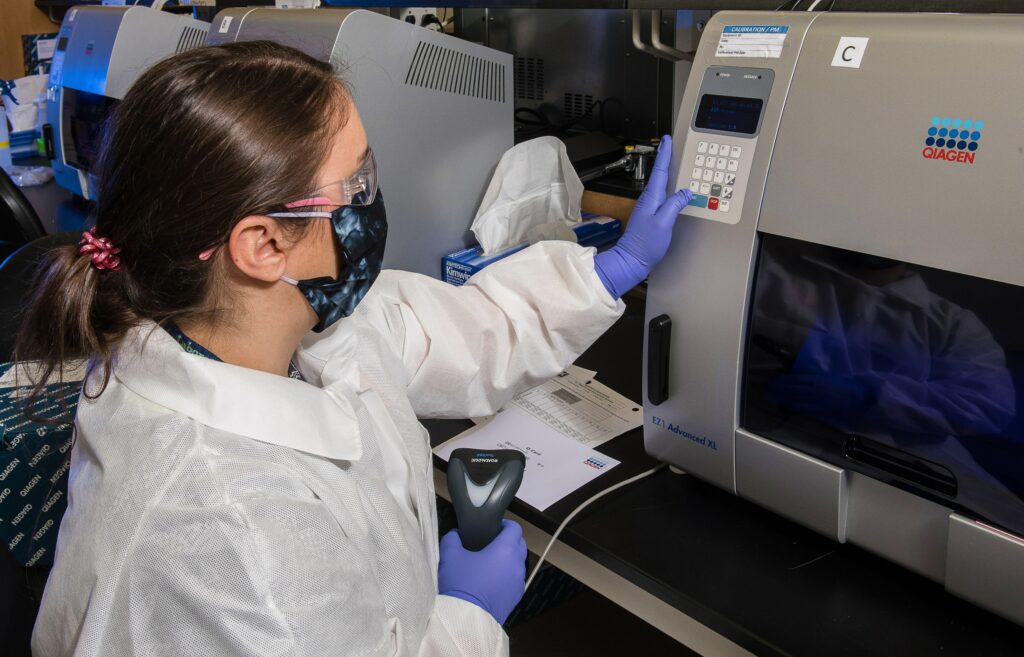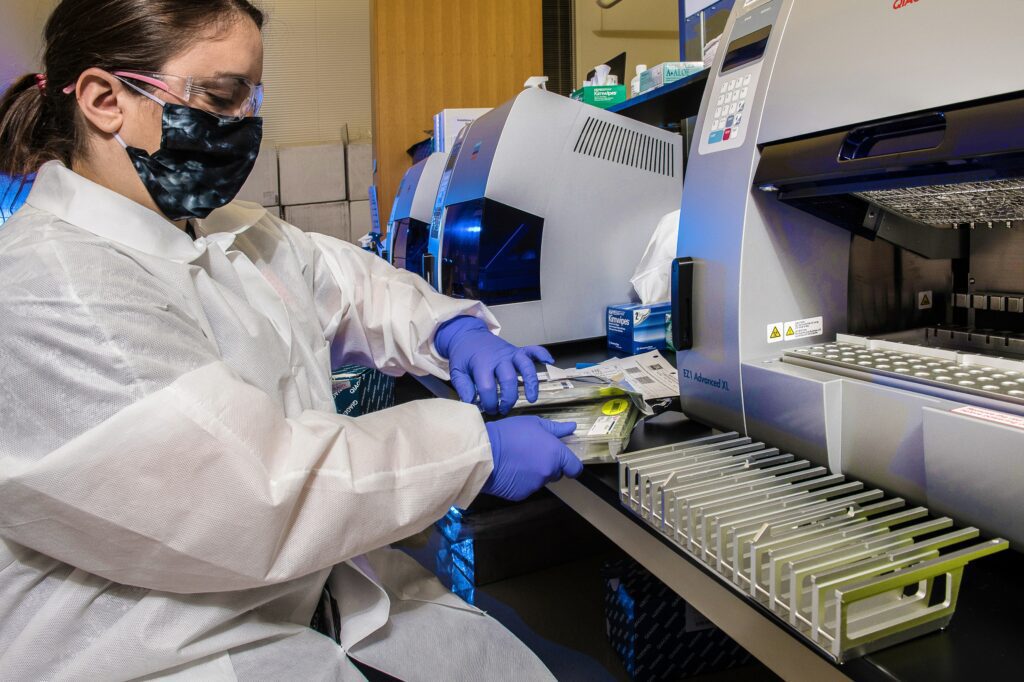12/05/2022 | Environmental | 9 MINUTE READ
Preparing for Harsh Applications with Environmental Test Chambers

Before products are shipped out or industrial processes are performed, many industrial facilities and companies complete testing in environmental chambers. Because of this testing, you can be confident that your phone battery won’t combust when it’s kept in the sun for a lengthy period of time. Car warranties are also created with data and information that’s gathered from testing that takes place in environmental chambers.
Companies in practically every industry rely on the data obtained from environmental test chambers. Within these chambers, companies are able to simulate harsh environments to determine how these environments affect industrial applications and products when paired with products such as the TCSP3020. The industries that most often use these test chambers include the medical device, automobile, and electronics industries.
Products in use may experience conditions ranging from artic cold to desert heat, from tropical humidity to dry, dusty plains. By putting these applications and products through harsh conditions, it’s easier to identify possible weaknesses in the design. This information can also be used to create warranties that take the various product weaknesses into account. In this guide, you’ll learn all you need to know about environmental test chambers and how they work.

What Is An Environmental Test Chamber?
Environmental test chambers are systems that provide users with the ability to alter the environmental conditions in an enclosed space, which is meant to assist in running controlled tests. It’s common for scientists, manufacturers, researchers, and engineers to use these test chambers to innovate and make sure that their products are safe for customers to use.
These chambers can be anywhere from half a cubic foot to as much as 12,000 cubic feet in total volume. The type of environmental test chamber you select determines how large the system will be. Test chambers are able to create different environmental conditions, which include temperature only conditions, humidity and temperature conditions, and various corrosive conditions. Accurate sensors are employed both to ensure desired conditions are created and impact on the test product can be measured.
If you keep an environmental test chamber maintained, it should be operational for at least 10 years. The test chamber that’s right for you mainly depends on the products you’re testing, the lab space you have access to, and the standards that you’re testing. The main test chamber styles and performance metrics are detailed below.

Test Chamber Styles
There are numerous test chamber styles that you can use, the primary of which include:
- Benchtop test chambers
- Floor test chambers
- Stackable test chambers
- Drive-in and walk-in test chambers
Benchtop test chambers are designed to be around 1.5-8.5 cubic feet in size. They’re meant to be placed on workbenches, which makes it easy for operators to position and remove devices for testing. Most of these models are humidity and temperature chambers, which makes them perfect for temperature cycling testing or steady-state testing.
As for floor models, they are positioned on the floor of the laboratory you’re working in. They can be anywhere from 2-264 cubic feet in total volume.
Smaller test chambers are able to be stacked directly on top of one another without experiencing performance problems. If a company has limited lab space but requires multiple test chambers for different applications, small and stackable test chambers are highly recommended. These models give you the opportunity to run fully independent tests concurrently.
Drive-in and walk-in test chambers can be constructed with panels or as a single structure. These chambers are large enough for operators or engineers to walk in, which may be needed to test larger products or many products at once. Drive-in chambers allow engineers to test different vehicles and aircraft against harmful environmental conditions.

Test Chamber Performance
There are many test chamber performances that an industrial facility or company can use, the primary of which include:
- Temperature only
- Temperature and humidity
- Salt spray
- Thermal shock
- Battery fixtures
- Laboratory and liquid cooled ovens
- Specialty chambers
- Custom-built test chambers
Temperature-only test chambers provide users with the opportunity to perform temperature cycling tests or steady-state tests. These chambers can be outfitted with radio frequency shielding as well, which is helpful for electronics companies.
Temperature and humidity chambers allow users to implement extreme conditions that are present in the real world. The companies that use these test chambers are likely wanting to test products that could end up being in popular devices, the primary of which is a smartphone. The purpose of these tests is to determine if the device can operate the same regardless of the conditions it’s exposed to. The lifespan of different products can also be simulated with the use of highly accelerated life testing.
Salt spray chambers give users the ability to see how their products are able to hold up to extensive corrosion. These chambers are usually transparent, which allows engineers to observe the products while the test is being performed. Monitoring and controlling salt concentration is important in quantifying effects.
As for thermal shock chambers, they consist of around 2-3 zones. Two of the zones will be positioned at opposite and extreme temperatures. The devices that are being tested will be sent between the zones quickly to identify what happens to them. A third zone might exist for ambient temperatures.
Certain manufacturers create test chambers that are designed with battery testing in mind. A small battery fixture has been made by AES that allows users to test batteries in nearly all environmental test chambers.
Laboratory ovens can be anywhere from 1-60 cubic feet in volume. These test chambers are perfect for developing stable and controlled environments with hot air circulation. It’s possible for the internal temperature in these chambers to reach around 400 degrees Fahrenheit. They are regularly used for curing, aging, baking, sterilizing, and drying applications.
Liquid-cooled ovens are able to lower the ambient conditions found in hot ovens to around -100 degrees Fahrenheit. Temperatures can drop much more rapidly than they can in standard mechanical refrigeration. Boosting these chambers with CO2 or LN2 results in liquid cooled ovens being able to reach cryogenic levels, which are around -365 degrees Fahrenheit.
Some of these test chambers don’t adhere to standard performance requirements. For instance, the HM-436 models by AES is a steady-state chamber that’s meant to be used with hydrogen maser atomic clocks. On the other hand, portable conditioning modules provide users with the ability to condition workspace air. The specialty chambers you can gain access to depend on the industry you operate out of as well as the devices that are being tested.
Many environmental test chamber providers are able to deliver customized test chambers to meet the specific needs that their clients have. These chambers can be designed to fit within exact test parameters.
How Do Test Chambers Work?
Test chambers have different components that are needed to deliver specific environmental conditions, which can be anything from air circulation to humidity.

Air Circulation
Air circulation is essential for environmental testing since lab conditions are part of obtaining precise results. Many test chambers are outfitted with a fan and baffle combination to make sure that temperature conditions are optimized.
Cooling & Refrigeration
It’s possible for test chambers to dip to low temperatures in a short period of time. Each test chamber will have different pull-down rates that can range from 36-50 degrees Fahrenheit per minute. As touched upon previously, boosting cooling with liquid nitrogen or liquid carbon dioxide allows temperatures to drop even lower.
Heating
The latest test chambers are outfitted with electric heating systems, which allow air to pass over fast-response nichrome heaters that come with ceramic cores. This process ensures that the test chamber delivers precise and fully controllable results. Before using this type of chamber, make sure that you maintain temperature ranges or extremes at a level that the chamber can withstand.
Humidity
In order to create humidity, a vapor steam generator is custom-fit to test chambers. These generators require the right water source to distribute humidity that ranges from 20-95% relatively humidity. Specialized devices allow humidity to be controlled at anywhere from 10-98% humidity.
Salt Spray
The salt spray used in an environmental test chamber is made and stored in a large tank, after which compressed air pushes the water through a small nozzle to develop a mist that enters the test chamber.
Industrial Applications
Environmental test chambers have been used across many industries for years. These chambers provide companies with an affordable, convenient, and effective method for testing products during the production or development stages. Below are some of the industrial applications that environmental test chambers are regularly used for.

Battery Industry
In the battery industry, test chambers are commonly used to test batteries for vulnerability to heat, vibration, and humidity. HALT and HASS testing are designed to simulate various failure conditions. Identifying how fragile a battery is requires precise testing. Batteries are placed through a wide range of tests, which include everything from thermal shock to altitude simulation.
Auto Industry
The auto industry uses test chambers to recreate the types of conditions that vehicles and their components could encounter while owned by a customer. Test chambers provide engineers with the opportunity to accelerate harsh conditions to identify how resilient the materials are.
Aerospace Industry
The aerospace industry uses test chambers to test atmospheric conditions, which is necessary to ensure that everything adheres to the strict SAE standards. There are three factors that are used to test aerospace equipment, which include reliability, safety, and quality.
Pharmaceutical Industry
The pharmaceutical industry performs testing in the form of steady, shelf life, expiration date, and accelerated aging tests. Just like the aerospace industry, companies in the pharmaceutical industry are tasked with adhering to strict regulations when creating medicines.
Environmental test chambers provide companies from a wide range of industries with the ability to simulate practically any condition, which allows for precise testing without needing to find the perfect conditions in the real world. There are also many different test chambers you can select from, which should make it easier for you to find the chamber that suits the industrial application you need to perform.
Posted by Dominic O'Donnell on December 5, 2022
Sensorex is a global leader in the design and manufacture of quality sensors for water quality and process applications. The company offers more than 2000 sensor packages for pH, ORP, conductivity, dissolved oxygen, free chlorine, chlorine dioxide, UV transmittance and other specialty measurements, as well as a full line of sensor accessories and transmitters. Its expert technical support engineers solve analytical sensor challenges with custom designs and off the shelf products.




